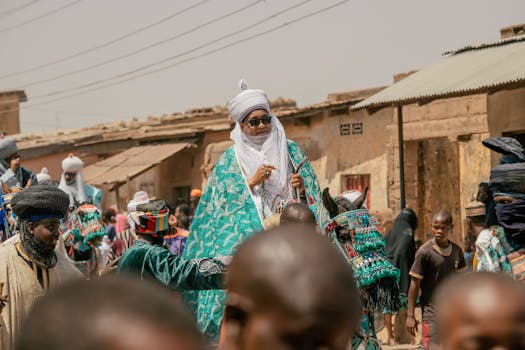
Connecting Cultures: The Story Behind Africa’s Diverse Fiber Traditions – WordPress
Connecting Cultures: The Story Behind Africa’s Diverse Fiber Traditions is a fascinating topic that highlights the rich cultural heritage of the African continent. Africa is home to a diverse range of fiber traditions, each with its own unique history, symbolism, and cultural significance. From the vibrant textiles of West Africa to the intricate basketry of East Africa, these traditions have played a crucial role in shaping the identities and communities of African cultures.
African fiber traditions have been an integral part of the continent’s cultural landscape for centuries. These traditions have been passed down from generation to generation, with each community developing its own distinct techniques, patterns, and designs. The fiber arts have been used to communicate, express, and connect with others, transcending linguistic and cultural barriers. In this article, we will delve into the story behind Africa’s diverse fiber traditions, exploring their history, significance, and impact on the continent’s cultural landscape.
The History of African Fiber Traditions
The history of African fiber traditions dates back thousands of years, with evidence of textile production found in ancient Egyptian, Nubian, and Ethiopian civilizations. The use of fibers such as cotton, wool, and silk was widespread, with each region developing its own unique textile traditions. In West Africa, the Ashanti and Yoruba peoples developed intricate gold and silk textiles, while in East Africa, the Maasai and Zulu peoples created beautiful beadwork and basketry.
The trans-Saharan trade played a significant role in the development of African fiber traditions, with the exchange of goods, ideas, and techniques between different regions and cultures. The introduction of new fibers, dyes, and textile technologies also had a profound impact on the continent’s fiber arts. The colonial period, however, had a devastating effect on African fiber traditions, as the imposition of European textile production methods and the exploitation of African resources led to the decline of traditional textile industries.
The Significance of African Fiber Traditions
African fiber traditions are more than just aesthetic expressions; they carry deep cultural, social, and symbolic meanings. In many African cultures, textiles and fiber arts are used to communicate status, identity, and affiliation. For example, in Ghana, the kente cloth is a symbol of royalty and prestige, while in South Africa, the ndlovu blanket is a symbol of marital status and family affiliation.
African fiber traditions also play a crucial role in cultural rituals and ceremonies. In many communities, textiles and fiber arts are used in initiation rites, weddings, and funerals, serving as a means of connecting the individual to the community and the ancestors. The fiber arts have also been used as a means of resistance and protest, with many African cultures using textiles and fiber arts to express their struggles and aspirations.
The Impact of African Fiber Traditions on Contemporary Culture
African fiber traditions have had a profound impact on contemporary culture, both within Africa and globally. The fiber arts have inspired countless artists, designers, and musicians, with many incorporating traditional African motifs and techniques into their work. The influence of African fiber traditions can be seen in fashion, music, and art, from the vibrant prints of West African textiles to the intricate beadwork of East African jewelry.
In recent years, there has been a resurgence of interest in African fiber traditions, with many young artists and designers seeking to revive and reinterpret traditional techniques and motifs. This renewed interest has led to the development of new textile industries and the creation of innovative, contemporary fiber arts that blend traditional techniques with modern materials and technologies.
Conclusion
In conclusion, the story behind Africa’s diverse fiber traditions is a rich and complex one, reflecting the continent’s cultural, social, and historical landscape. From the vibrant textiles of West Africa to the intricate basketry of East Africa, these traditions have played a crucial role in shaping the identities and communities of African cultures. As we move forward in an increasingly globalized world, it is essential that we recognize and celebrate the significance of African fiber traditions, both as a means of preserving cultural heritage and as a source of inspiration for contemporary artists and designers.

